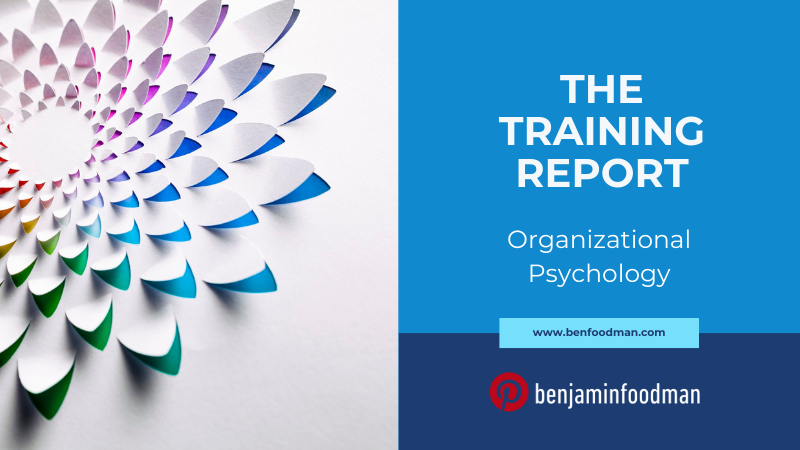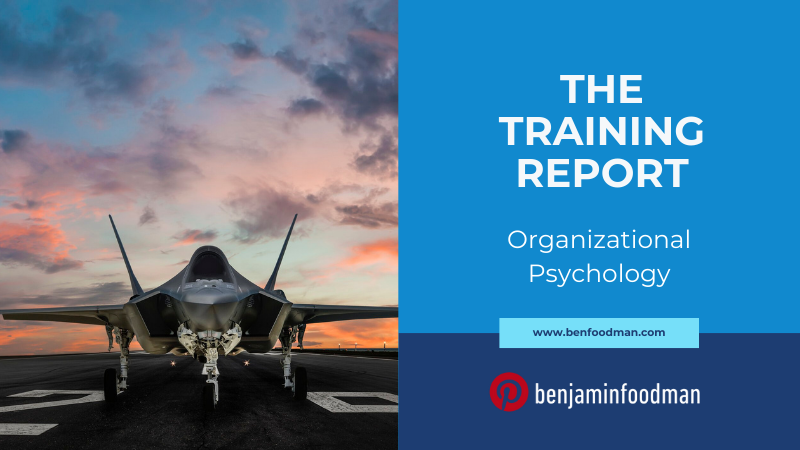Organizational Psychology - 3 Strategies For Optimizing Problem Solving & Creativity
About the Author
Ben Foodman is a licensed psychotherapist & performance specialist. He owns his private practice located in Charlotte North Carolina where he specializes in working with athletes to help them overcome mental blocks (the yips), PTSD, ADD / ADHD and achieve flow states through the techniques of Brainspotting & Neurofeedback. If you are interested in services, use the link here! Enjoy the article below!
Introduction: How Organizations Can Develop Standardized Strategies To Help Enhance Creative Problem Solving
Whether your organization is a sports team or a private company, if you have employees you have hopefully tried to think of ways to encourage your team to enhance their creativity. The more creative your team is, the more likely you are to be able to solve complex problems that are generating obstacles for your organization to be successful. But being creative versus fostering creativity can be two different things, and understandably, many organizations don’t know how to properly scale encouragement of creativity for their team.
While I have discussed this topic in varying degrees in previous Training Reports, I wanted to dive deeper into three strategies that any organization can incorporate into their routine to foster creativity for problem solving. For this first strategy I want to review how working smart first then hard can help with this. Second, I want to review communication strategies organizations can use to help with this, and finally I want to discuss how downtime helps generate more creativity. Let’s begin by reviewing strategy number one: work smart first, then hard.
Strategy One: Operate Smart, Then Work Hard
There has been a popular philosophy amongst leaders of organizations, that hard work is the foundation of institutional success. While there is no question that hard work and diligent preparation are key factors to solving complex problems, leaders should place a priority on first working smart, then working hard. So the obvious question is what does working smart first then working hard look like across the spectrum of organizations? In my opinion, working smart can mean having a ‘tunnel vision’ approach and taking time thoroughly analyzing one problem at a time.
This may sound overly simple, but in my experience people either try to solve too many problems at once, or have not done a thorough enough job in terms of asking all of the relevant and important questions that need to be addressed when solving problems. Essentially, organizations should be ‘lean’ in terms of the number of problems they choose to focus on, and then bulk up with additional problems once they can handle the workload and demonstrate that they are creative enough to develop a process that is effective in developing the right questions.
Strategy Two: Create Open Reporting Systems In Sub-Group Categories
In my experience, organizations are too bureaucratic and do not make it easy for members of the team to report problems that would be important for leaders to know. This is in large part because people’s egos are not put in check, and there truly is an I in Team for many lower level leaders and managers in the work place. This ranking system stifles creativity and discourages employees or non-leader individuals from sharing valuable ideas that could help the organization solve problems and advance towards achieving their mission statement.
One thing that organizations can do is reconsider how the chain of command is structured in a business. Whether this means that there are fewer managers, or better lines of communication, organizations need to find communication strategies that make all team members feel as though they are able to meaningfully contribute to the advancement of the institution. When people feel as though they have more freedom to share how they feel, they will most likely be in a better position to tap into the creative side of their mind as opposed to self-censorship.
Strategy Three: Schedule Problem Solving Events Unrelated To The Mission Statement
There most certainty is a work-ethic component to developing creative thinking for problem solving. But there also does appear to be something important when it comes to having ‘downtime’ or having boundaries between work and creative thinking. If people are too ‘task oriented’ and focused on accomplishing only one thing in a given moment, there is a very high chance that they will not be accessing other areas of their brain that may be useful in developing creative ideas for whatever the issue is that they are working on.
As such, organizational leaders should take the time to foster or encourage ‘downtime’ and boundaries between team members and the organization’s mission. In theory, this could help everyone get the space and mindset they need to be able to tap into their creative thinking process. Furthermore, while this is undoubtedly an unconventional approach, very few businesses that are successful have exclusively focused on only using ‘conventional’ approaches. Take a chance, and trust in your team members ability to be creative in order to help the organization achieve its’ mission statement by creating more downtime opportunities!
Note To Reader:
If you are an athlete reading this segment of the TRAINING REPORT, hopefully this content was helpful! I put the Training Report together because I felt like many of the discussions on issues such as the Yips/mental blocks, strength training & other subject matter on athlete performance concepts were really missing the mark on these ideas (e.g. how trauma is the direct cause of the Yips). If you are interested in learning more, make sure to subscribe below for when I put out new content on issues related to sport psychology & athlete performance! Also, if you are looking to work with a mental performance specialist, you are in the right place! USE THIS LINK to reach out to me to see if my services are the right fit for your goals!
ARE YOU ON THE LIST?
Make sure you’re signed up to Ben’s mailing list to receive news & updates on new strategies in sport psychology, upcoming workshops & products. Don’t wait, sign up now!

















